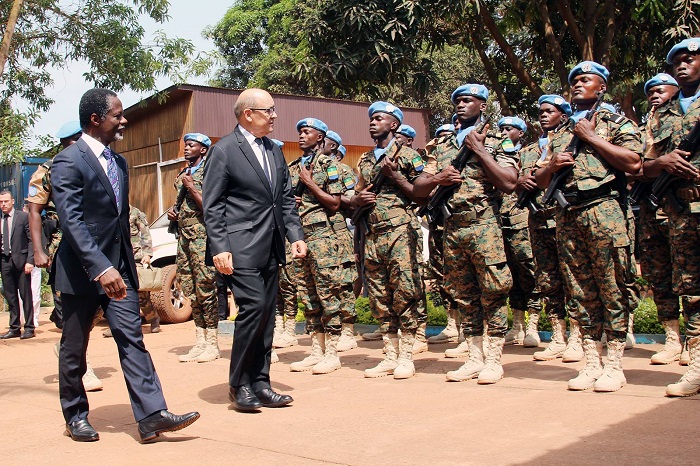
Bangui, Central African Republic | AFP | With a spike in militia killings, a deepening humanitarian crisis and the army still in shambles, the Central African Republic’s bid for peace and stability remains elusive.
A three-year civil war that erupted in 2013 between Muslim and Christian militias left thousands of people dead and displaced hundreds of thousands of others, disrupting farming, transport and public services in one of the world’s poorest nations.
The nation breathed a sigh of relief in March 2016 when President Faustin-Archange Touadera took office, with a mandate to lead the country through its transition to peace.
But Central Africa’s war wounds have proved hard to heal, with swathes of the country still facing unrest.
Since November, violence has raged in the central Ouaka region, leaving hundreds dead and many more injured.
Last week, 11 people were gunned down in their village in Ouaka near the provincial capital Bambari, according to local authorities and the UN peacekeeping mission in Central Africa, MINUSCA.
A local official, speaking on condition of anonymity, blamed the Union for Peace in Central Africa (UPC), saying that armed attackers from the group “invaded the village, shooting at residents”.
MINUSCA spokesman Herve Verhoosel said, however, that it was unclear whether the UPC or a rival faction — the Popular Front for the Renaissance of the Central African Republic Republic (FPRC) — was to blame.
Both the UPC and the FPRC are factions of the ex-Seleka, the mainly Muslim rebel coalition that seized power from ex-president Francois Bozize in March 2013, sparking civil war.
Anti-balaka (“anti-machete”) militias, drawn largely from the deeply poor nation’s Christian minority, fought back, in a war that killed mostly civilians and prompted an international intervention.
The Seleka rebellion was disbanded six months after the coup, but some of its factions have rejected the disarmament process and remain active to this day.
– Mass displacement –
An independent expert of the United Nations, Marie-Therese Keita-Bocoum, in February said that “armed groups reign as masters over more than 60 percent of the territory, benefitting from total impunity.
“They have taken the place of the judicial apparatus and terrify the population.”
Due to the rise of violence, coupled with a shortfall in aid funding, the humanitarian situation in the country has taken a turn for the worse.
The UN says some 2.2 million people — more than half the population — remain in dire need of assistance.
“One in every five Central Africans is either displaced internally or is a refugee in neighbouring countries,” the UN Office for the Coordination of Humanitarian Affairs (OCHA) said Thursday, adding that 100,000 new internally displaced people had been registered since September.
Funding for aid agencies, which are major contributors to basic social services in Central Africa, remains critically short, OCHA said in a statement.
– President without an army –
While parts of the country remain wracked by violence, military intervention in 2013 by France and MINUSCA restored relative calm to the capital Bangui.
But since France withdrew in October, and with the Central African army still under an international arms embargo, the UN peacekeeping force is now the sole functioning force on the ground.
With international support, efforts are under way to bring the national army back into action — though it is unclear how long that process will take.
According to General Herman Ruys, who heads the European military training mission in Central Africa, the country’s first 750 troops will be ready for operations in mid-May.
And at a recent meeting, US ambassador Jeffrey Hawkins pledged $8 million (7.5 million euros) in aid for military equipment purchases, local media reported.
On a recent visit to restive Bambari, Touadera announced: “I have come to tell you that I have decided to restore order in Bambari and in Ouaka province.”
But without a functioning army, it remains to be seen how he plans to do that.
“The weapons that the army (today) has are barely enough to equip… 150 men,” the recently appointed Central African military Chief of Staff Ludovic Ngaifei has said.
 The Independent Uganda: You get the Truth we Pay the Price
The Independent Uganda: You get the Truth we Pay the Price



